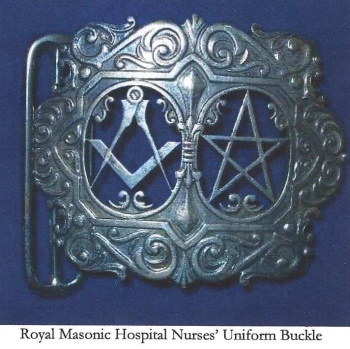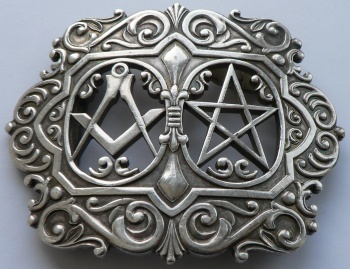En: Royal Masonic Hospitals
Royal Masonic Hospitals
In 1911, members of Malmesbury Lodge No. 3156 became interested in the possibility of starting a Masonic hospital or nursing home and formed a committee with a civil engineer, Percy Still, as secretary. In 1913 Grand Lodge approved the idea and by 1916 fundraising had begun.
The spiralling number of Great War casualties moved supporters of the hospital scheme to take out a short term lease of the former Chelsea Woman’s Hospital in Fulham Road, London and open it as the Freema-sons’ War Hospital. Over 4,000 servicemen were treated at the hospital by the end of the war. Additional facilities were opened at Fulham Palace and a convalescent home was opened in Caversham near Reading.
After World War I the Freemason’s Hospital and Nursing Home opened in the Fulham Road premises and accepted its first patient in 1920. Despite alterations this site proved too small and supporters continues their efforts to find a larger site.
Once sufficient funds were secured a site was purchased at Ravenscourt Park, West London.

In 1933, King George V and Queen Mary opened the hospital and the King granted permission for it to be known as the Royal Masonic Hospital. Money for the hospital was raised through donations, with donors being awarded a special jewel, known as the Permanent Steward’s Jewel.
During the Second World War the hospital again became a war hospital, treating over 8,600 servicemen, at no cost to the government.
After the war, the formation of the National Health Service saw the end of many private hospitals but the Royal Masonic Hospital remained independent. A School of Nursing was established in 1948 and it quickly gained a reputation for producing highly skilled nurses, whose distinctive silver belt buckles became a coveted honour amongst the profession.
By the late 1970s approximately 4,700 patients per year were being treated. Although patients were mostly freemasons, fee paying non-members were accepted from 1977. In 1976 the Grand Master, the Duke of Kent, opened the Percy Still wing, with four new operating theatres. However, fewer masons wanted to travel to London for treatment and running costs grew rapidly due to inflation. In 1992
Grand Lodge recommended that it’s closure to safeguard its assets. In 2002, the hospital buildings were acquired by the Hammersmith Hospitals NHS Trust as Ravenscourt Park Hospital, to relieve bed shortages.
Numerous jewels were produced in association with the Royal Masonic Hospital, the most com-monly encountered being the Permanent Steward’s Jewel and the Redevelopment Fund Jewel.



